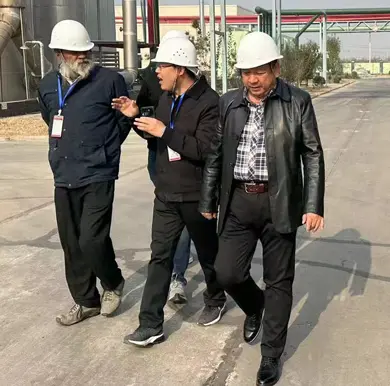
Out . 21, 2024 00:43 Back to list
Analysis of Redispersible Polymer Powder Market Share Trends and Key Players
The Growing Market for Redispersible Polymer Powder Trends and Insights
In recent years, the construction and building materials sector has witnessed significant innovation and transformation, particularly with the increased adoption of redispersible polymer powders (RPP). These fine powders, which are derived from various polymers and designed to be redispersed in water, play a critical role in enhancing the properties of cement-based materials. This article explores the current market share of redispersible polymer powders, trends driving their growth, and key factors influencing their adoption across various applications.
Understanding Redispersible Polymer Powders
Redispersible polymer powders are water-soluble additives that, upon addition to cementitious materials, create a flexible and durable bonding matrix. Commonly used in tile adhesives, plasters, and facade applications, RPP enhances performance characteristics such as adhesion, flexibility, workability, and resistance to water and weathering. The evolution of construction technology and a growing emphasis on sustainable building practices have significantly propelled the demand for these additives.
Current Market Overview
As of late 2023, the global market for redispersible polymer powders has shown robust growth, with a market share that is steadily increasing in various regions, including North America, Europe, Asia-Pacific, and Latin America. This growth is attributed to various factors such as infrastructural development, urbanization, and a shift towards eco-friendly building materials. According to market reports, the RPP market is projected to witness a Compound Annual Growth Rate (CAGR) of around 6%-8% between 2023 and 2030.
Key Trends Driving Growth
1. Construction Industry Dynamics The rapid expansion of the construction industry fueled by urbanization and population growth has led to an increased demand for advanced building materials. RPPs are pivotal in meeting the performance demands of modern construction products.
2. Sustainability and Eco-friendliness The global focus on sustainability has prompted manufacturers to develop environmentally friendly building materials. RPPs, which can be formulated to reduce carbon footprints and energy consumption, are favored in green building initiatives. Their ability to improve the durability and longevity of building materials further enhances their appeal.
redispersible polymer powder market share

3. Technological Advancements Innovations in polymer chemistry have led to the development of new formulations of redispersible polymer powders that exhibit improved performance traits. Enhanced properties, such as superior water resistance and flexibility, are making RPPs a preferred choice among manufacturers.
4. Diversification of Applications Beyond traditional applications in tile adhesives and plasters, redispersible polymer powders are increasingly being utilized in other sectors, including paints and coatings, sealants, and automotive products. This diversification is contributing to the overall growth of the market.
5. Regulatory Support Stricter construction regulations in various countries concerning building quality and environmental impacts have further propelled the adoption of RPP. Manufacturers are recognizing the importance of complying with these regulations, leading to more sustainable product offerings that include redispersible polymer powders.
Regional Insights
Asia-Pacific is currently the largest market for redispersible polymer powders, driven by booming construction activities in countries like China and India. Rapid urbanization, along with government initiatives focused on infrastructure development, adds to the region's attractiveness for market participants. North America and Europe follow closely, with substantial investments in renovation projects and a pronounced trend towards sustainable construction materials.
Future Outlook
Looking ahead, the redispersible polymer powder market is expected to continue its upward trajectory. As consumer preferences shift towards high-performance and environmentally friendly construction materials, RPPs will likely play an essential role in shaping the future of the building and construction industry. Strategic partnerships between manufacturers and raw material suppliers, along with increased research and development, are anticipated to further drive innovations in this field.
In conclusion, the redispersible polymer powder market is on a promising path, characterized by notable growth and diversification. As industries evolve and adapt to new challenges, RPPs will remain a critical component of modern construction, ensuring better quality, enhanced performance, and sustainability in building practices.
-
Why HPMC is a Key Additive in Wall Putty Formulations
NewsAug.05,2025
-
Redispersible Powder in Decorative Renders: Function Meets Finish
NewsAug.05,2025
-
Redispersible Powder for Interior Wall Putty: Smooth Results Every Time
NewsAug.05,2025
-
HPMC’s Water Retention Capacity in Dry Mortar Applications
NewsAug.05,2025
-
HPMC Factory Contributions to Liquid Detergents
NewsAug.05,2025
-
How HPMC Factory Products Change Detergent Textures
NewsAug.05,2025







